THREE HILLS
OBSERVATORY
UPDATES
(Latest at top)
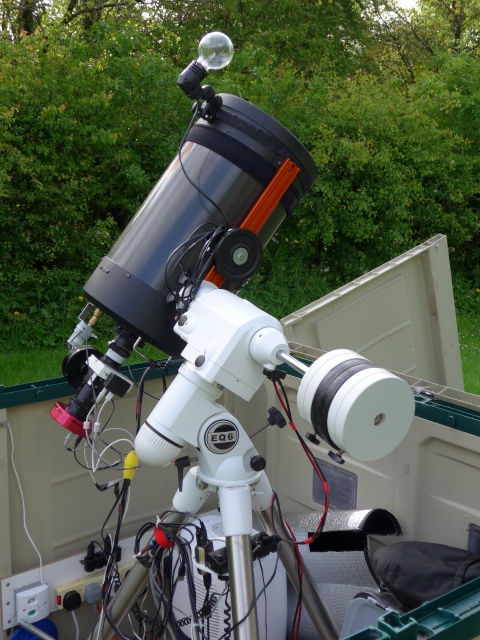
April 2014
The observatory is now 7 years old and still doing its job well.
This photo shows the roof open and an ALPY spectrograph installed on the C11 (For low resolution spectroscopy of faint objects, which complements the LHIRES III spectrograph), The ALPY setup uses an F6 focal reducer and includes the slit guiding and calibration lamp modules. The main camera is now an ATIK 314L+ and in this setup the ATK 16IC-S camera is being used for guiding on faint objects (a DSI Pro is also used) the small black box on the side of the calibration module is to control the module remotely via USB.
The C11 is now fitted with two dew heater bands and the focus is motor controlled (added for remote operation as the C11 is not as stable mechanically and thermally as the VC200L)
Note the "Filly Dot" decorative gas discharge lamp attached to the top of the OTA. This has a mix of gasses giving a large number of emission lines across the spectrum for calibration. (useful for regions of the spectrum where the internal neon lamp in the LHIRES does not have any lines). The lamp is swung in front of the telescope aperture as needed but is not automated currently.
SAFETY WARNING !
If you use one of these "Filly" lamps take care not to drop them ! They are made of very thin glass and implode producing a metre radius shower of glass fragments and dust. I have now wrapped my remaining lamps in cling film which hopefully will contain the debris should I decide to repeat the “experiment” !
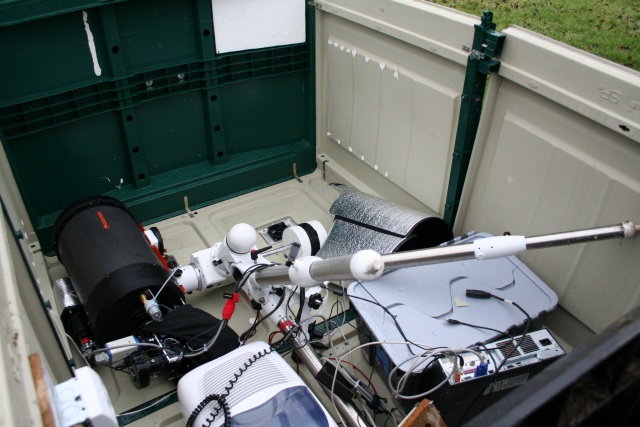
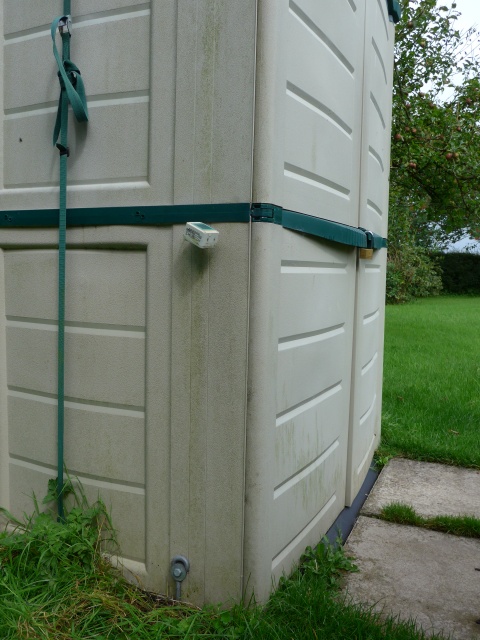
February 2011
In February 2011 the observatory (and everything inside) was blown over in a storm. Amazingly after drying out, all the equipment was undamaged apart for the C11 needing recollimation.
Several panels and fixing on the observatory were damaged however but replacements were obtained from from Ketter despite it being a discontinued model of shed in the UK.
The observatory was subsequently fixed down more securely and an additional strap over the observatory roof added when high winds are forecast.
The small box on the side is a rain sensor (Not very successful as there has to be quite a bit of rain before it triggers. Using on line real time rain radar maps has proved to be more useful)
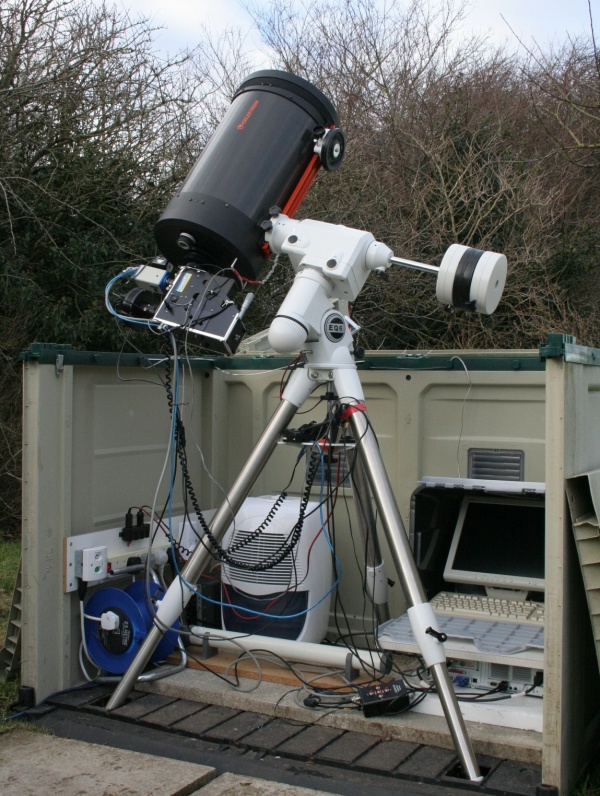
February 2010
In February 2010, the VC200L/GPDX/Skysensor 2000 was retired to portable duty and replaced by a Celestron C11 on an EQ6 Pro mount as the main scope. The EQ6 is controlled via a serial link to the observatory computer using EQMOD ASCOM and Cartes de Ciel.
The LHIRES III spectrograph is shown here with an upgrade to ATIK 16 IC-S as the main camera.
A sliding counterbalance weight is used on the dovetail to balance the weight of the spectrograph.
A heater band has been added around the front of the OTA prevent dewing of the corrector. A dew shield is also used provided it is not too windy!
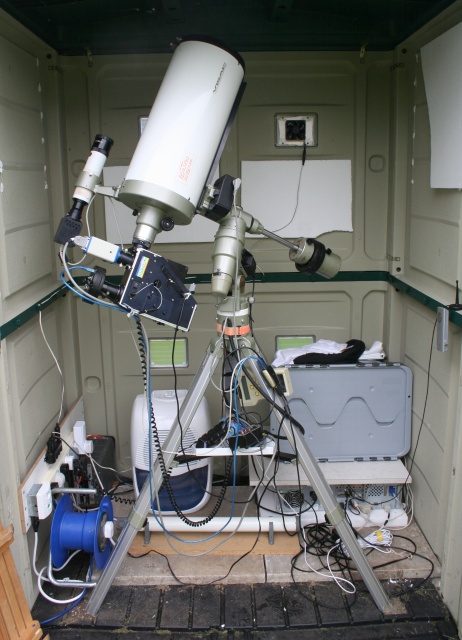
August 2008
The observatory at 18 months old and the basic construction is
unchanged apart from replacing the self tapping
screws on the hinges with
stainless steel nuts and
bolts.
The main issues have been with
condensation trapped inside after closing up for the
night. (The inside of
the flip top roof faces the
cold sky when the observatory is open)
The
top was lined with polystyrene (which has proved difficult
to stick as you can see!) A fan was fitted to
one of the small
windows and a tubular heater added.
Even with all this, high
humidity continued to be a problem in this
particularly wet corner of
England. I finally added
a small dehumidifier which cuts in at about
70%
RH and this seems to have solved the problem. (I still need the
heater to aid the dehumidifier on the occasional
days when the
temperature is near or below
freezing. The remote sensor from
a wireless weather station allows me to
monitor the conditions
inside the observatory from
the house)
The tripod legs stand on
solid
ground through holes cut in the floor.
The observatory is
now semi-remotely operated with a local PC
controlling the mount
(GPDX/Skysensor 2000),
the LHIRES III spectrograph
calibration lamp and the cameras (SC3
webcam on the finderscope,
Stellacam EX on the
spectrograph guide port and ATIK ATK16-IC for the main
camera) The observatory PC is part of the home
wireless network and
is accessed using "Windows
Remote Desktop"